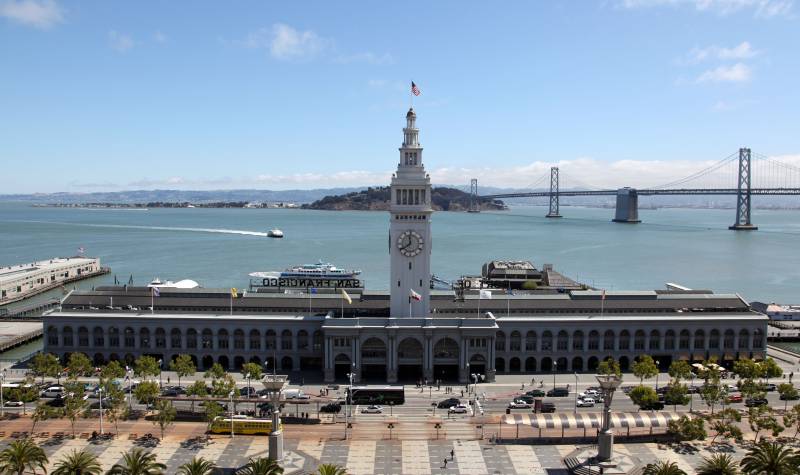The waterfront landmarks of many cities are under increasing threat from floods and rising sea levels brought on by human-driven climate change. St. Mark’s Basilica in Venice, Italy and the Venice Beach boardwalk in Los Angeles face similar challenges to San Francisco.
But the growing magnitude and frequency of the climate-related threats, the high costs and effort involved in saving heritage sites, and competing ideas about what’s worth saving and what isn’t, can make it hard for cities to know where their priorities lie.
“The whole issue of climate change and historic preservation intersects right at the waterfront,” said Elaine Forbes, executive director of the Port of San Francisco. The agency manages a 7.5-mile stretch of the city’s Bay-facing waterfront.
As she watched the ferries come and go on a sunny afternoon near her office at one of the city’s recently renovated historic piers, Forbes said sea level rise hasn’t historically been as much of a threat to San Francisco as major earthquakes.
That’s changed.
Parts of the main road that runs along the waterfront have flooded from heavy rains in recent years. The state estimates the water could rise roughly up to two and a half feet above its current level by 2060, and potentially up to seven feet by the turn of the century.
“I would say it’s clear by mid-century we need to have had intervention,” Forbes said.
The city is figuring out how to strengthen its sea wall, sections of which are 140 years old. It also plans to physically move some of the waterfront’s historic structures out of harm’s way.
The most prominent of these is the Ferry Building.
“To prepare for sea level rise, which is coming, we may need to lift this building up to seven feet,” Forbes said, gazing up at the heavily-touristed landmark.
The Ferry Building sits in the middle of the waterfront. It’s been a beacon to incoming ferry riders since the late 1890s. The high end boutiques and gourmet eateries inside attract droves of visitors. It’s hard to imagine what it will take to physically raise the enormous white structure with its soaring clock-tower up that high.
“We’ve heard loud and clear everywhere: It’s to be saved,” Forbes said, adding that this will happen — no matter the cost or effort involved. The specifics of the project have yet to be released.
‘What’s gonna happen to the rest of the city?’
Since 2017, the city has conducted extensive studies and outreach to help determine how to make its shoreline more resilient. Last year, it sought feedback on a set of proposed strategies through public meetings, focus groups and shoreline walks. A recent report (PDF) states “preserving the historic nature of the Embarcadero” — that’s the part of the waterfront where the Ferry Building sits — as one of the public’s priorities.
Not everyone NPR spoke with necessarily feels the same way.
“The Ferry Building, if you wanna raise it seven feet, that’s gonna save the Ferry Building. But what’s gonna happen to the rest of the city?” said Sanaz Tahernia, a digital health care professional who lives in one of San Francisco’s shoreline neighborhoods. “The community is what makes San Francisco. Not these buildings.”

9(MDAxOTAwOTE4MDEyMTkxMDAzNjczZDljZA004))
